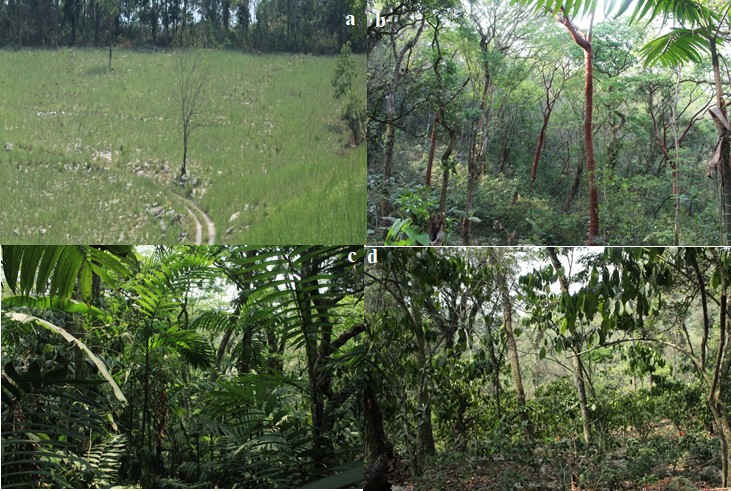HABITAT USE BY GRAY FOX (Urocyon cinereoargenteus, CARNIVORA: CANIDAE) IN AN ANTHROPIZED TROPICAL ECOSYSTEM
Ricardo Serna-Lagunes, Misael Alejandro-Hernández, Dulce María Ávila-Nájera, Gerardo Benajmín Torres-Cantú, Pablo Andrés-Meza, Fernando Isaac Gastelum-Mendoza, Juan Salazar-Ortiz, Carlos de Jesús Ocaña-Parada
Abstract
Background. Gray fox, Urocyon cinereoargenteus is tolerant to habitat disturbance, but the biotic and abiotic factors that determine the selection of space in the subperennial medium forest (SMF) with different degrees of anthropization are not known, which is relevant to explain a fraction of an animal’s niche. Objective. We described the use of habitat by the gray fox, in four habitat units in the SMF, with different degrees of anthropization. Methodology. We classified four habitat units with vegetation structure criteria: Sugar cane-coffee plantation, Coffee plantation-forest, forest and Coffee plantation, where we evaluated parameters such as number of carnivores and potential prey and plant cover. In addition, we evaluated the altitude, temperature, precipitation and evaporation. Using indirect techniques, we obtained gray fox records in each habitat unit, which we related to biotic and abiotic parameters through a χ2 test and a partial least squares analysis; we applied a dendrogram to estimate the similarity of use of the habitats; and a response surface-based model to describe habitat use. Results. We associated fourteen independent records of gray fox and six of them with the Coffee plantation-SMF habitat, where it was correlated with temperature. Implications. Shrub coverage, the number of competitors and evaporation in SMF and Coffee plantation-SMF are factors correlated with a low number of gray fox records. Conclusion. In this ecosystem anthropized by the production of coffee and sugarcane, the gray fox may be using open habitats for hunting and closed habitats to seek refuge while it is not active.
Keywords
agroecosystems; abiotic and biotic conditions; coffee plantation; response surface-based model.
URN:
http://www.revista.ccba.uady.mx/urn:ISSN:1870-0462-tsaes.v25i2.40081
DOI:
http://dx.doi.org/10.56369/tsaes.4008
Copyright (c) 2022 Ricardo Serna-Lagunes

This work is licensed under a
Creative Commons Attribution 4.0 International License.


